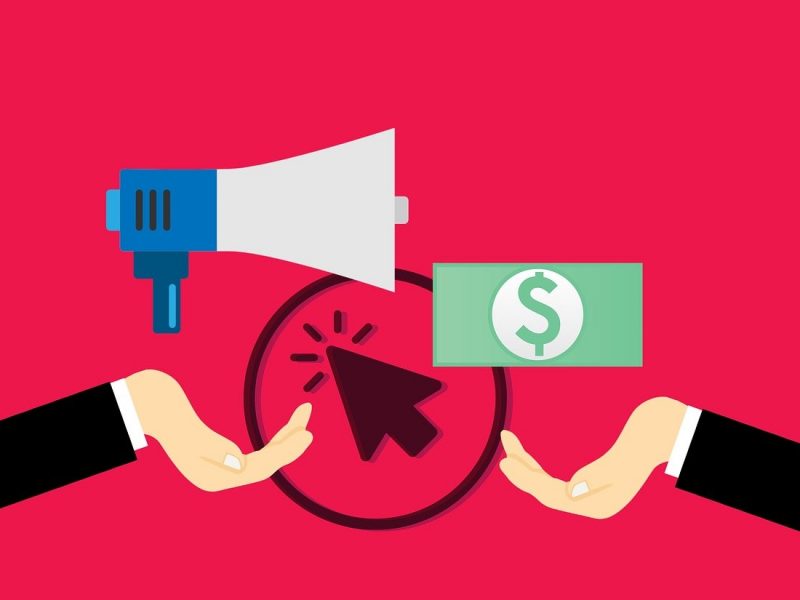businesses are perpetually seeking innovative ways to attract potential customers and drive sales. One of the most effective strategies to achieve this is through Pay Per Click (PPC) advertising. PPC advertising has become an indispensable tool for e-commerce businesses, providing a powerful mechanism to reach targeted audiences, boost visibility, and maximise ROI. This blog post delves into the intricacies of PPC advertising for e-commerce, offering insights into its benefits, strategies, and best practices to ensure success.
Understanding PPC Advertising
PPC advertising is an online marketing model where advertisers pay a fee each time one of their ads is clicked. Essentially, it’s a way of buying visits to your site, rather than attempting to earn those visits organically. Search engines, such as Google and Bing, as well as social media platforms like Facebook, Instagram, and LinkedIn, are popular venues for PPC ads.
Key Components of PPC
- Keywords: The foundation of any PPC campaign. Keywords are the terms and phrases that potential customers use to search for products or services. Choosing the right keywords is crucial to the success of your PPC efforts.
- Ad Copy: The text or creative elements of your ad. Effective ad copy should be engaging, relevant, and include a compelling call to action (CTA).
- Landing Pages: The web pages that users are directed to after clicking on an ad. These pages should be optimised for conversion, offering a seamless user experience.
- Bid Amount: The amount you are willing to pay for each click. This can vary based on competition, keyword popularity, and the quality score assigned by the advertising platform.
Benefits of PPC Advertising for E-commerce
PPC advertising offers numerous benefits for e-commerce businesses, making it a valuable addition to any digital marketing strategy. Here are some key advantages:
1. Immediate Results
Unlike SEO, which can take months to show results, PPC advertising can drive traffic to your site almost instantly. Once your campaign is live, your ads can appear in search results or social media feeds, attracting clicks and conversions quickly.
2. Targeted Reach
PPC allows for highly targeted advertising. You can reach specific demographics based on age, gender, location, interests, and even behaviours. This ensures that your ads are seen by people who are most likely to be interested in your products.
3. Cost Control
With PPC, you have complete control over your budget. You can set daily or monthly spending limits, and you only pay when someone clicks on your ad. This makes it easier to manage costs and measure the return on investment (ROI).
4. Measurable Performance
PPC platforms provide detailed analytics and reporting, allowing you to track the performance of your campaigns in real-time. You can see metrics such as impressions, clicks, conversions, and cost per conversion, helping you to refine your strategy and improve results.
5. Brand Awareness
Even if users don’t click on your ads, they still see your brand name and message. This exposure can help build brand awareness and recognition, making it more likely that customers will consider your brand in the future.
Creating a Successful PPC Campaign for E-commerce
To harness the full potential of PPC advertising, it’s essential to craft a well-structured and strategic campaign. Here’s a step-by-step guide to help you get started:
Step 1: Define Your Goals
Before launching a PPC campaign, it’s crucial to establish clear objectives. Are you aiming to increase sales, generate leads, or boost brand awareness? Defining your goals will guide your strategy and help measure success.
Step 2: Conduct Keyword Research
Keyword research is the cornerstone of any PPC campaign. Use tools like Google Keyword Planner, SEMrush, or Ahrefs to identify relevant keywords that potential customers are using. Consider the search volume, competition, and relevance to your products.
Step 3: Create Compelling Ad Copy
Your ad copy should be concise, engaging, and tailored to your target audience. Highlight the unique selling points of your products and include a strong call to action. A/B testing different versions of your ad copy can help determine what resonates best with your audience.
Step 4: Design Optimised Landing Pages
The landing page is where users will end up after clicking your ad, so it needs to be optimised for conversion. Ensure that it is relevant to the ad, loads quickly, and provides a seamless user experience. Include clear CTAs and minimise distractions.
Step 5: Set Up Tracking and Analytics
To measure the effectiveness of your PPC campaign, set up tracking and analytics. Use tools like Google Analytics and conversion tracking to monitor key metrics such as click-through rates (CTR), conversion rates, and ROI.
Step 6: Launch and Monitor Your Campaign
Once everything is in place, launch your campaign. Keep a close eye on its performance and make adjustments as needed. Regularly analyse your data to identify trends, optimise your keywords, and refine your ad copy.
Advanced Strategies for E-commerce PPC
To stay ahead of the competition and maximise the effectiveness of your PPC campaigns, consider implementing these advanced strategies:
1. Remarketing
Remarketing involves targeting users who have previously visited your site but did not make a purchase. By displaying relevant ads to these users as they browse other sites or use social media, you can encourage them to return and complete their purchase.
2. Dynamic Search Ads
Dynamic search ads automatically generate ad headlines and landing pages based on the content of your website. This can help you capture more relevant traffic and reduce the time spent on creating ad copy.
3. Shopping Ads
For e-commerce businesses, shopping ads (also known as product listing ads) are particularly effective. These ads display product images, prices, and descriptions directly in search results, making them highly appealing to potential customers.
4. Ad Extensions
Ad extensions provide additional information and enhance your ads, making them more visible and attractive. Common extensions include site link extensions, call extensions, and location extensions.
5. Audience Targeting
Beyond keywords, you can use audience targeting to reach specific groups of people. Platforms like Google Ads and Facebook Ads offer options to target based on demographics, interests, behaviours, and even past interactions with your website.
6. Bid Adjustments
Adjusting your bids based on factors like device, location, and time of day can help you allocate your budget more effectively. For example, you might increase bids for mobile users if you find they are more likely to convert.
Common Challenges and How to Overcome Them
While PPC advertising offers numerous benefits, it also comes with its challenges. Here are some common issues e-commerce businesses face and how to overcome them:
1. High Competition and Costs
In competitive industries, the cost per click (CPC) can be high. To manage costs, focus on long-tail keywords, optimise your quality score, and continually refine your targeting.
2. Ad Fatigue
Users may become tired of seeing the same ads repeatedly. To combat ad fatigue, regularly update your ad copy and creative elements. A/B testing can help determine what works best.
3. Low Conversion Rates
If your ads are getting clicks but not converting, review your landing pages. Ensure they are relevant to the ad, easy to navigate, and optimised for conversions. Conduct user testing to identify and address any issues.
4. Tracking and Attribution
Accurate tracking and attribution can be challenging, especially if you’re using multiple channels. Use advanced tracking tools and ensure that all your platforms are integrated. This will help you understand the customer journey and allocate your budget effectively.
5. Keeping Up with Trends
The digital marketing landscape is constantly evolving. Stay informed about the latest trends and updates in PPC advertising. Regularly review industry blogs, attend webinars, and participate in professional forums to stay ahead of the curve.
Conclusion
PPC advertising is a powerful tool for e-commerce businesses looking to drive traffic, increase sales, and build brand awareness. By understanding the fundamentals, setting clear goals, and implementing advanced strategies, you can create successful PPC campaigns that deliver significant ROI. Remember to continually monitor and refine your campaigns, stay informed about industry trends, and be adaptable to changes in the market. With a strategic approach and a commitment to continuous improvement, PPC advertising can be a game-changer for your e-commerce business.
Embrace the power of PPC and unlock the full potential of your e-commerce venture. Whether you’re a seasoned marketer or just starting, the insights and strategies outlined in this guide will help you navigate the complexities of PPC advertising and achieve remarkable results. Happy advertising!



